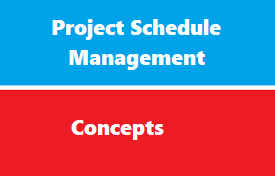introduction
Schedule Management Overview
A project managers key responsibility is to create a realistic project schedule. Before the project execution begins,
the project manager should identify if the planned end date is achievable.
There are several project management software available in the market( here in networks pioneers we have fully covered Primavera and MS project in separate course ) .
The project managers can use this software to assist with scheduling in their real-life projects.
Project manager must thoroughly understand the process of scheduling a project.
Benefits of project schedule management
Project scheduling provides the following benefits:
- Assists with tracking, reporting on, and communicating progress.
- Ensures everyone is on the same page as far as tasks, dependencies, and deadlines.
- Helps highlight issues and concerns, such as a lack of resources.
- Helps identify task relationships.
- Can be used to monitor progress and identify issues early.
Project Planning vs Scheduling
- Planning primarily involves selecting the appropriate policies, methodologies, and procedures required to deliver the project on time.
- Scheduling, converts the plans, scope, and cost into an operational timeline
tips for creating a solid project schedule
- The time management processes identified earlier are the key steps to creating a project schedule.
- Get input from stakeholders. and Make sure you don’t create your schedule in isolation.
- It’s important to use your team and other stakeholders to identify tasks, resources, dependencies, and durations.
- Looking at previous projects with similar scope and requirements can help create realistic estimates and ensure you haven’t forgotten any tasks.
- Include project milestones. Milestones are events or markers that stand for an important point in your project
- Project kickoff meeting should be considered
- Design approvals
- Completion of requirements
- Product implementation
- Project closeout
- Consider any non-work time. For example, make sure vacations and holidays are reflected in your schedule so that you’re not assuming people will be working when they’re not.
- Define the critical path on your project. Identifying your project’s critical pathallows you to prioritize and allocate resources to the most important tasks in the project.
- Record scheduling assumptions. Write down the logic behind your scheduling predictions. For example, if you assume it will only take 10 hours to complete a task because you’re going to have a senior engineer. That way, if you end up with a junior engineer, you can understand and explain why it took twice as long as planned.
- Keep risk in mind. Identify and document any factors that pose a risk to staying on schedule. This will help your risk management efforts.
schedule management processes
6.1 Plan Schedule Management (Planning phase )
6.2 Define Activities (Planning phase )
6.3 Sequence Activities(Planning phase )
6.4 Estimate Activity Durations (Planning phase )
6.5 Develop Schedule (Planning phase )
6.6 Control Schedule (Monitoring & Controlling phase )
conclusion
this was briefly an overview about project scheduling management as knowledge area
next article we will discus each process :
- concepts,
- inputs,
- tools ,
- techniques
- outputs ,
- and best practice
please join us there


